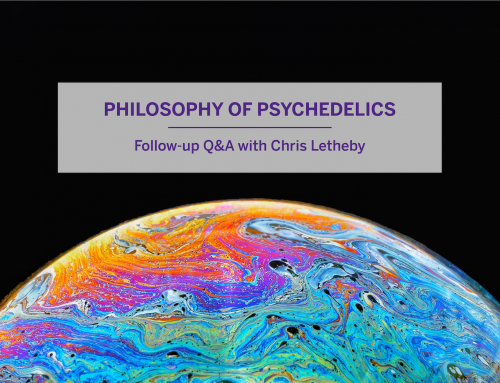By Jessey Wright
On June 15th and 16th, 2013 the Brain and Mind Institute at the University of Western Ontario hosted a symposium, the seeds for which were sown at the signing of a research agreement between the Royal Society of Canada and the Israeli Academy of Sciences and Humanities less than a year ago. Scholars from Canada and Israel gathered to discuss research and challenges related to brain plasticity, learning and education.
The topics ran the gamut from molecular neuroscience to behavioural psychology to education. For example, Sidney Strauss provided an engaging summary of cognitive and neuroscientific research on teaching, which was framed as a call for a multidisciplinary scientific understanding of teaching. Adi Mizrahi presented his lab’s work on changes at the single neuron level in the brains of rats, as they became mothers. For example, neurons implicated in hearing perception in rats show activity in mothers when they hear tones rat pups make, and not in female rats who have not had a litter. Janet Werker talked about the effect of pregnant mothers taking selective serotonin re-uptake inhibitors (SSRI’s) for depression on speech perception in their infants. Her results showed that the formation of perceptual discrimination abilities in infants was either accelerated or blocked when their mother took SSRI’s during gestation, and further research is required to sort out how this change affects development. Merav Ahissar told us about her work in identifying differences in brain regions engaged in auditory discrimination tasks between experts and novices, and opened a door for the use of brain imaging as a diagnostic tool in dyslexia. Linda Siegel concluded the symposium with a presentation of results from an 8-year longitudinal study of reading comprehension in children in a school district in Northern British Columbia. Working with teachers and educators in the school district, they designed a program for teaching children to read based on psychological and neuroscientific research, then tracked the student’s progress up to grade seven. Her data provide compelling evidence for the effectiveness of the teaching program for reducing the incidence of dyslexia in students by grade seven.
The symposium was an invigorating illustration of the power of interdisciplinary and international collaboration for both the advancement of scientific research and building stronger connections between science and society. On Sunday there was a discussion panel on ‘Current Issues in “Brain Plasticity, Learning and Education”‘, and during that panel many barriers that have historically impeded the application of scientific research on learning and education – both in Canada and Israel – to the education sector were identified.
The communication barrier between scientists, educators and policy makers is regarded as the most prominent. Several invited speakers pointed to the lack of emphasis on training graduate students in the sciences about how to interact with experts in other fields as well as members of the general public.
Even more pressing, in Canada at least, is the resistance of educators and policy makers to scientific evidence that bears on their teaching practices. This resistance was made explicit in Linda Siegel’s report of her experiences trying to bring about change in British Columbia, and more subtly in discussions about the firm rooted neuromyths prevalent amongst those who are not neuroscientists. Such myths include the right-brain/left-brain learner distinction, which is no longer a viable model according to current science. Compounding these concerns were results of the so-called `Seductive Allure of Neuroscience Explanation’ [Weisberg, 2008] study. In that study, Weisberg and colleagues showed that the addition of neruoscientific results skewed their subject’s ability to critically engage with results of psychological research. They note, “even irrelevant neuroscience information in an explanation of a psychological phenomenon may interfere with people’s abilities to critically consider the underlying logic of this explanation”.
Recent debates in philosophy of science have touched on these very issues. In 2010 a special issue of Synthese on “Socially Relevant Philosophy of Science” [Volume 177, Issue 3], engaged with issues of collaboration, trust between communities, epistemic and social obligations and other topics aimed at how philosophers of science could become more socially and scientifically engaged and what they could do once they got there. While these discussions are about how philosophers can and should engage scientific and lay communities, the lessons and recommendations could be generalized.
For example, Carla Fehr (a co-editor on the above mentioned special issue) recently published an article on “Feminist Engagement with Evolutionary Psychology” which analyzes how feminist philosophers have engaged in critical evaluations of evolutionary biology. She identifies a variety of strategies philosophers have taken to engage this scientific community and distinguishes those strategies that facilitated positive engagement from those that hindered it. She stresses the importance of approaching the community with a genuinely open mind, and engaging with that community.
Fehr stresses that such engagement is more than just becoming fluent in the language of that scientific community or simply publishing in their journals. She writes:
“The goal of engagement is the development of a productive overlap among communities of philosophers and science studies scholars, and scientists. Activities that can foster this overlap include developing collaborative relationships with scientists in terms of both research and pedagogy, participating in scientific lab groups, presenting our research in an accessible manner at conferences and in journals where the scientific activity is happening, or inquiring about how our philosophical skills, for example, can be of use to practicing scientists.” [Fehr, 2012]
For neuroscientists to break down the barriers between themselves and those educators who they hope will benefit from their research, they need to engage with the educational community. If Carla Fehr’s examples reveal anything, it’s that crossing disciplinary divides requires more than merely learning the relevant lingo; one has to shelve preconceptions about the other discipline, and genuinely engage with its members.
Linda Siegel’s research provides a good example of successful interdisciplinary engagement of the kind Carla Fehr recommended. For example, Siegel noted during her talk that the lesson plans and teaching materials used in the reading program were designed by the educators who would be using them. It was not a matter of bringing psychological research to the educators and telling them how to use it, or letting them use it however they saw fit, but the interactions were bi-directional. Educators and scientists worked together to develop the reading program. To illustrate the effectiveness of the reading program, Linda noted that the school district’s provincial performance in reading comprehension in grade four was elevated to the second highest in the province after its implementation. The engagement was genuine, and the results striking.
The lessons philosophers have derived from our struggles to engage effectively and productively with scientific communities can aid those communities in engaging with the public and the production of scientifically informed learning and teaching tools. Symposia such as this one play an important role in taking the first steps along this path, and also in building bridges between the sub-disciplines within the science itself.
REFERENCES:
Fehr, C. (2012), “Feminist Engagement with Evolutionary Psychology”, Hypatia, 27 (1): 50–72.
Weisberg D. S., Keil F. C., Goodstein J., Rawson E. and Gray J. R. (2008), “The seductive allure of neuroscience explanations”. J Cogn Neurosci 20(3): 470-7.






